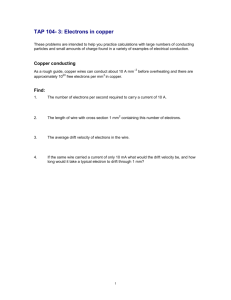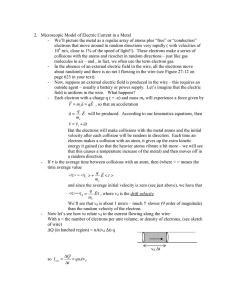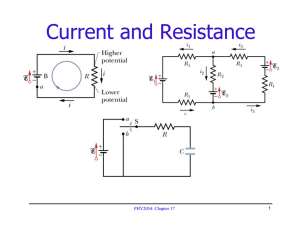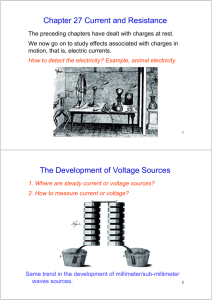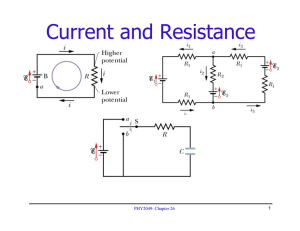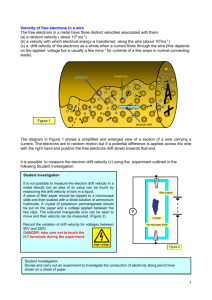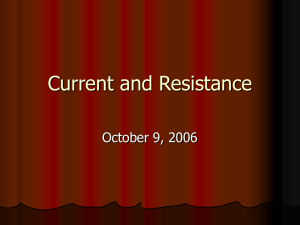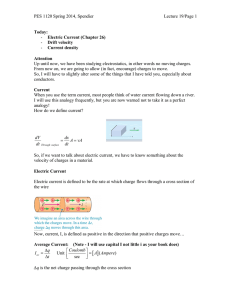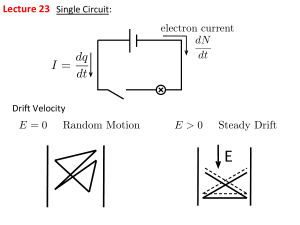PH 112 MJM ... January 20, 2005
advertisement
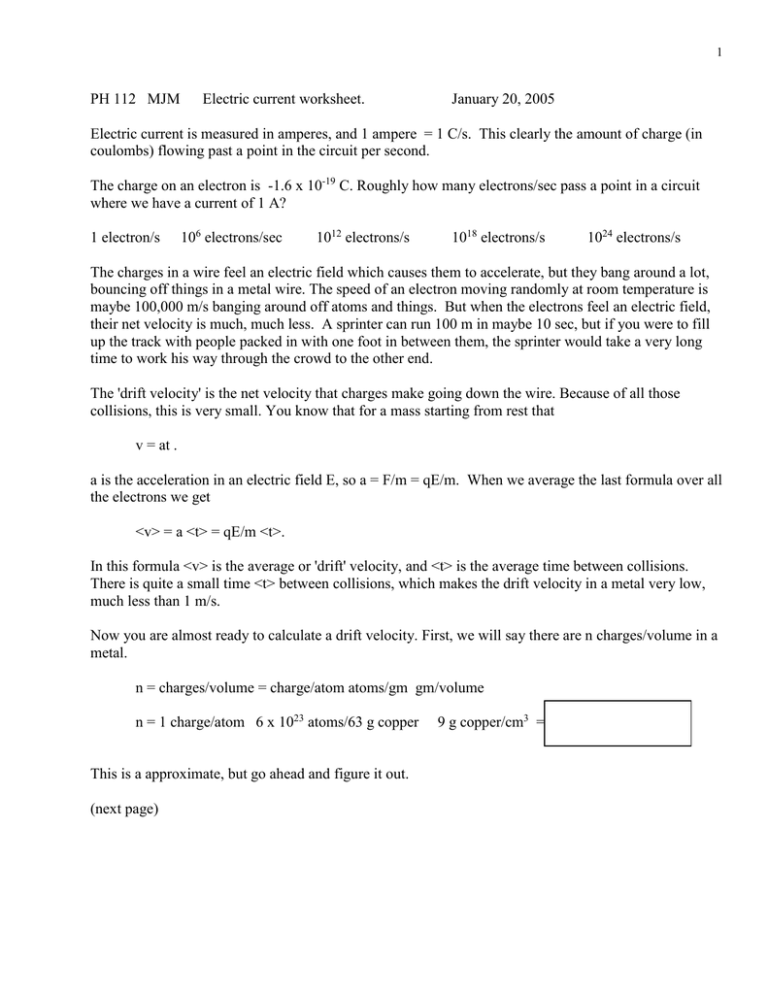
1 PH 112 MJM Electric current worksheet. January 20, 2005 Electric current is measured in amperes, and 1 ampere = 1 C/s. This clearly the amount of charge (in coulombs) flowing past a point in the circuit per second. The charge on an electron is -1.6 x 10-19 C. Roughly how many electrons/sec pass a point in a circuit where we have a current of 1 A? 1 electron/s 106 electrons/sec 1012 electrons/s 1018 electrons/s 1024 electrons/s The charges in a wire feel an electric field which causes them to accelerate, but they bang around a lot, bouncing off things in a metal wire. The speed of an electron moving randomly at room temperature is maybe 100,000 m/s banging around off atoms and things. But when the electrons feel an electric field, their net velocity is much, much less. A sprinter can run 100 m in maybe 10 sec, but if you were to fill up the track with people packed in with one foot in between them, the sprinter would take a very long time to work his way through the crowd to the other end. The 'drift velocity' is the net velocity that charges make going down the wire. Because of all those collisions, this is very small. You know that for a mass starting from rest that v = at . a is the acceleration in an electric field E, so a = F/m = qE/m. When we average the last formula over all the electrons we get <v> = a <t> = qE/m <t>. In this formula <v> is the average or 'drift' velocity, and <t> is the average time between collisions. There is quite a small time <t> between collisions, which makes the drift velocity in a metal very low, much less than 1 m/s. Now you are almost ready to calculate a drift velocity. First, we will say there are n charges/volume in a metal. n = charges/volume = charge/atom atoms/gm gm/volume n = 1 charge/atom 6 x 1023 atoms/63 g copper This is a approximate, but go ahead and figure it out. (next page) 9 g copper/cm3 = 2 Now we give all the charges a velocity v. In a time dt they will go a distance vdt, and in a wire of area A the will sweep out a volume dV = A vdt. We will call the charge on each carrier to be e (the magnitude of e is the charge on an electron), and then we see that the amount of charge in this volume is dq = e n(A vdt) Now get yourself a formula for the current, which is I = dq/dt = charge/time passing a point in the wire. Take a current of 1 A in a copper wire whose radius is 1 mm, and figure out the drift velocity using the value of n we got on the previous page. You will find that v is not very big. (Don't forget to put n into SI units!) We will be discussing a lot of items which have two terminals. Your car battery has a + and - terminal, and so do all the little batteries in various gadgets. A resistor has two leads on it (two 'terminals') and so does a capacitor. Here is a general rule: what flows into one terminal of any two-terminal device flows out of the other terminal ( total flow in = total flow out ) battery + C1 1A 1.5 A How much current flows into the resistor? How much current flows out of capacitor C2? How much current enters capacitor C1? How much current enters the battery from the left? How much leaves the battery on the right? C2
